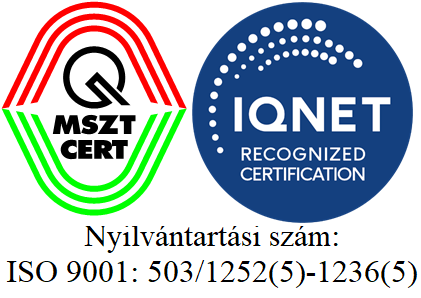REGULATORY OVERSIGHT OF RADIOACTIVE WASTE REPOSITORIES
The HAEA took over the responsibility of regulatory oversight of the repositories from July 1, 2014, the legal framework for which is laid down in the Act on Atomic Energy and the HAEA Decree 9/2022 (XII. 29.).
Licensing is one of the most important segments of the regulatory activities. In all cases the licensee shall use safety analysis to demonstrate the long term safety, compliance with the related legal provisions and special requirements are guaranteed during and as a result of the licensed activity.
According to the relevant laws the HAEA conducts the following licensing procedures:
· licensing required for site survey and assessment, siting, construction, operation, modification, closure and active and passive institutional control of the radioactive waste repositories;
· licensing of buildings connected to radioactive waste repositories, and licensing of elevators of these buildings;
· licensing required for modification of systems, structures and components of radioactive waste repositories;
· licensing required for the modification the organizational structure, management system and documents of the licensee;
· licensing of in-service inspection programme of pressure retaining components and pipelines operated in the radioactive waste repositories belonging under the regulatory oversight of the HAEA;
· licensing of scope, methods, acceptance standards and schedule of non-destructive material tests of systems, structures and components important to safety of the radioactive waste repository;
· licensing required for the first introduction and later modifications of emergency response plans of radioactive waste repositories;
· determination of conditions for further operation, ordering of implementation of necessary measures and approval of deviation identified based on the results of Periodic Safety Review due in every ten years;
· designation and review of the safety area of nuclear facilities, and radioactive waste repositories;
According to the law the HAEA invites co-authorities into its licensing procedures. In specific cases, regarding some facilities the Act on Atomic Energy also requires higher level contributions beyond the regulatory procedures. Among others a preliminary consent in principal is required for the preparatory activities for the construction of a new radioactive waste repository.
Public hearings are mandatory for the most important licences, that is for each life cycle licensing procedures of the facilities.
The purpose of regulatory inspection is for the HAEA to ensure safe use of atomic energy.
The HAEA performs inspections in accordance with the life cycle of the repository including specific inspection aspects. During its oversight activity related to radioactive waste repositories comprehensive, revealing and occasional inspections are carried out.
· The main purpose of the comprehensive inspection is for the HAEA to inspect the compliance and harmony of the processes of the repository in the given life cycle phase, and the operation and management of processes, reviews and assessments tasks, that is the operation of the management system. A property of the comprehensive inspection is that it is performed according to a predefined program and on predefined areas during several days in working groups of regulatory inspectors.
· The purpose of revealing inspection is to reveal the operational safety problems of the radioactive waste repository and those areas, part processes and activities, where problems actually or may occur.
· The purpose of occasional inspection is for the HAEA to inspect certain acts in the processes, activities in the given life cycle phase of the facility and to gain information for its regulatory processes or to conduct such sample-like inspection, by which it can confirm that also the routine operations are in compliance with the provisions of laws, regulatory decisions and standards and internal regulations of the licensee.
The HAEA prepares an annual inspection plan, which it publishes on its website and informs the licensees and authorities of that.
The HAEA performs announced and, if justified, unannounced inspections in the repositories (and at the contractors).
The HAEA conducts several inspections in the radioactive waste repositories every year. The professionals of the co-authorities and further experts may also contribute the implementation of inspections. Inspections may take place on the site or by means of data supply in the case of documentation inspection.
The HAEA annually assesses the safety performance of the storage facilities.
The assessment is the third pillar of regulatory oversight, during which the HAEA takes into account the extent of potential hazards represented by the radioactive waste repositories. The assessment criteria of safety parameters are determined by the HAEA to take into account the safety performance level achieved by the facility as well as the national and international experience with the safety of the radioactive waste repositories, and in addition to support at the same time the licensees in improving safety performance.
The HAEA developed and put in use the indicator system used for nuclear facilities also for radioactive waste repositories. The assessment can so be based also on the results of the safety indicator system. Monitoring and analysis of safety parameters of operation, in addition to the potential for an early recognition of safety problems, may supply data for planning of oversight activities of the HAEA and to take regulatory actions.
The HAEA groups the indicators around three main assessment areas:
· smooth operation,
· safe operation,
· safety culture.



 ©HAEA - All rights reserved
©HAEA - All rights reserved